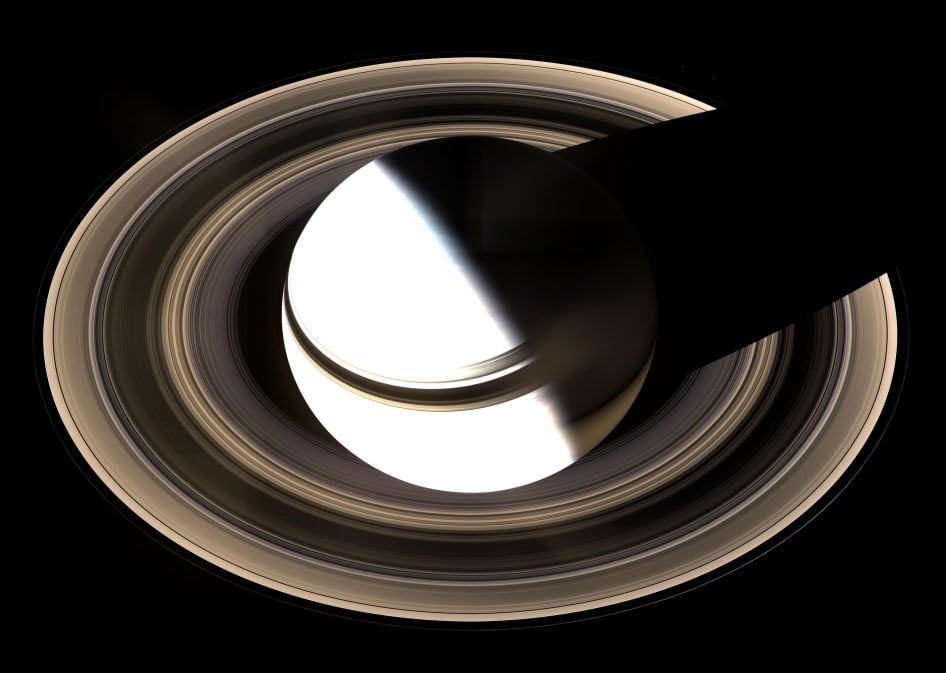Got circles on the brain today? It's Pi Day -- (3/14 for those of us on the west side of the pond) and a celebration of math and science – as well as the infinite and irrational! It is also Albert Einstein's birthday. What's Pi? Π is the 16th letter in the Greek alphabet and is used to represent a mathematical constant, the ratio of a circle's circumference to its diameter, approximately equal to 3.1415...
In basic mathematics, Pi is used to find area and circumference of a circle. You might not use it yourself every day, but Pi is used in most calculations for building and construction, quantum physics, communications, music theory, medical procedures, air travel, and space flight, to name a few.
You might imagine that NASA regularly uses Π to calculate trajectories of spacecraft. Above is a visible documentation of a technique called a "pi transfer" used by the Cassini spacecraft to complete a maneuver to fly by Saturn's moon Titan flyby.
NASA explains:
A pi transfer uses the gravity of Saturn's largest moon, Titan, to alter the orbit of the Cassini spacecraft so it can gain different perspectives on Saturn and achieve a wide variety of science objectives. During a pi transfer, Cassini flies by Titan at opposite sides of its orbit about Saturn (i.e., Titan's orbital position differs by pi radians between the two flybys) and uses Titan's gravity to change its orbital perspective on the ringed planet.
This image was taken on January 19, 2007, showing the perspective the spacecraft had of Saturn and its rings during the pi transfer.
Other ways NASA uses Pi is to determine the size of craters and extrasolar planets, figuring out how much propellent a spacecraft has, and learning what an asteroid is made of. Mike Seibert from the Mars Exploration Rover team explained on Twitter today how they use Pi every day to talk to the Opportunity rover:
Fact: We use pi is used every single sol when operating Opportunity. Robots like radians, humans like degrees. Pi is our translator. — Mike Seibert (@mikeseibert)
Here's an infographic of ways NASA uses Π
And here's a great song about Pi to help you celebrate the day:
Get ready to celebrate with extra gusto next year -- it will be 3/14/15.
 Universe Today
Universe Today
